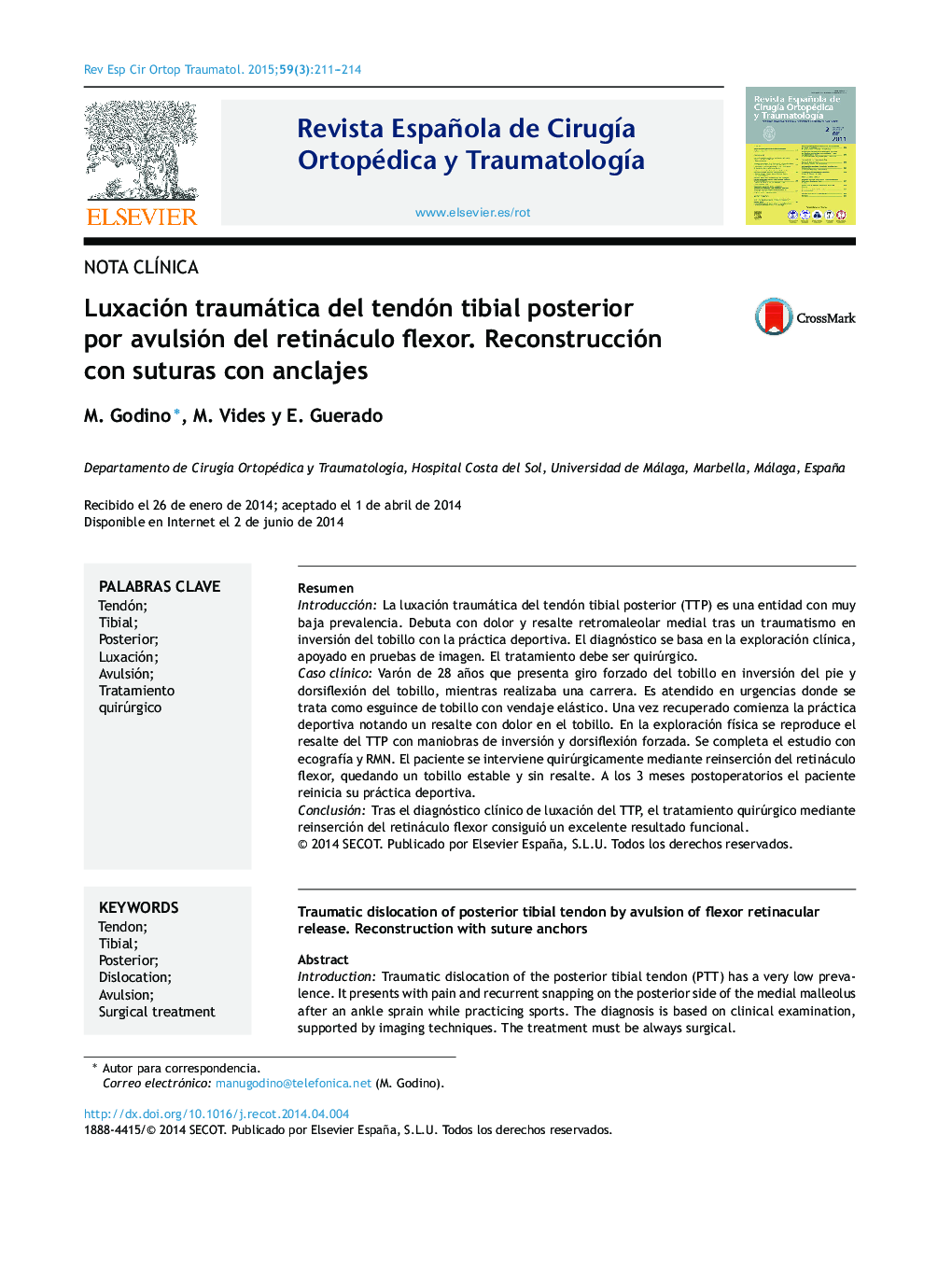| کد مقاله | کد نشریه | سال انتشار | مقاله انگلیسی | نسخه تمام متن |
|---|---|---|---|---|
| 4086346 | 1267946 | 2015 | 4 صفحه PDF | دانلود رایگان |
ResumenIntroducciónLa luxación traumática del tendón tibial posterior (TTP) es una entidad con muy baja prevalencia. Debuta con dolor y resalte retromaleolar medial tras un traumatismo en inversión del tobillo con la práctica deportiva. El diagnóstico se basa en la exploración clínica, apoyado en pruebas de imagen. El tratamiento debe ser quirúrgico.Caso clínicoVarón de 28 años que presenta giro forzado del tobillo en inversión del pie y dorsiflexión del tobillo, mientras realizaba una carrera. Es atendido en urgencias donde se trata como esguince de tobillo con vendaje elástico. Una vez recuperado comienza la práctica deportiva notando un resalte con dolor en el tobillo. En la exploración física se reproduce el resalte del TTP con maniobras de inversión y dorsiflexión forzada. Se completa el estudio con ecografía y RMN. El paciente se interviene quirúrgicamente mediante reinserción del retináculo flexor, quedando un tobillo estable y sin resalte. A los 3 meses postoperatorios el paciente reinicia su práctica deportiva.ConclusiónTras el diagnóstico clínico de luxación del TTP, el tratamiento quirúrgico mediante reinserción del retináculo flexor consiguió un excelente resultado funcional.
IntroductionTraumatic dislocation of the posterior tibial tendon (PTT) has a very low prevalence. It presents with pain and recurrent snapping on the posterior side of the medial malleolus after an ankle sprain while practicing sports. The diagnosis is based on clinical examination, supported by imaging techniques. The treatment must be always surgical.Case reportA 28 year old man sprained ankle his ankle while jogging. He was treated in an emergency department with an elastic bandage. Once he recovered, he went back to running, noticing a projection with ankle pain. In the physical examination the PTT was reproduced with inversion maneuvers and forced dorsiflexion. Ultrasound and MRI were performed on the ankle. The patient was operated on, leaving a stable ankle with no projection. Three months later he had no pain and restarted his physical activities.ConclusionSurgical treatment of PTT dislocation by re-anchoring the flexor retinacula provides an excellent functional outcome.
Journal: Revista Española de Cirugía Ortopédica y Traumatología - Volume 59, Issue 3, May–June 2015, Pages 211–214
